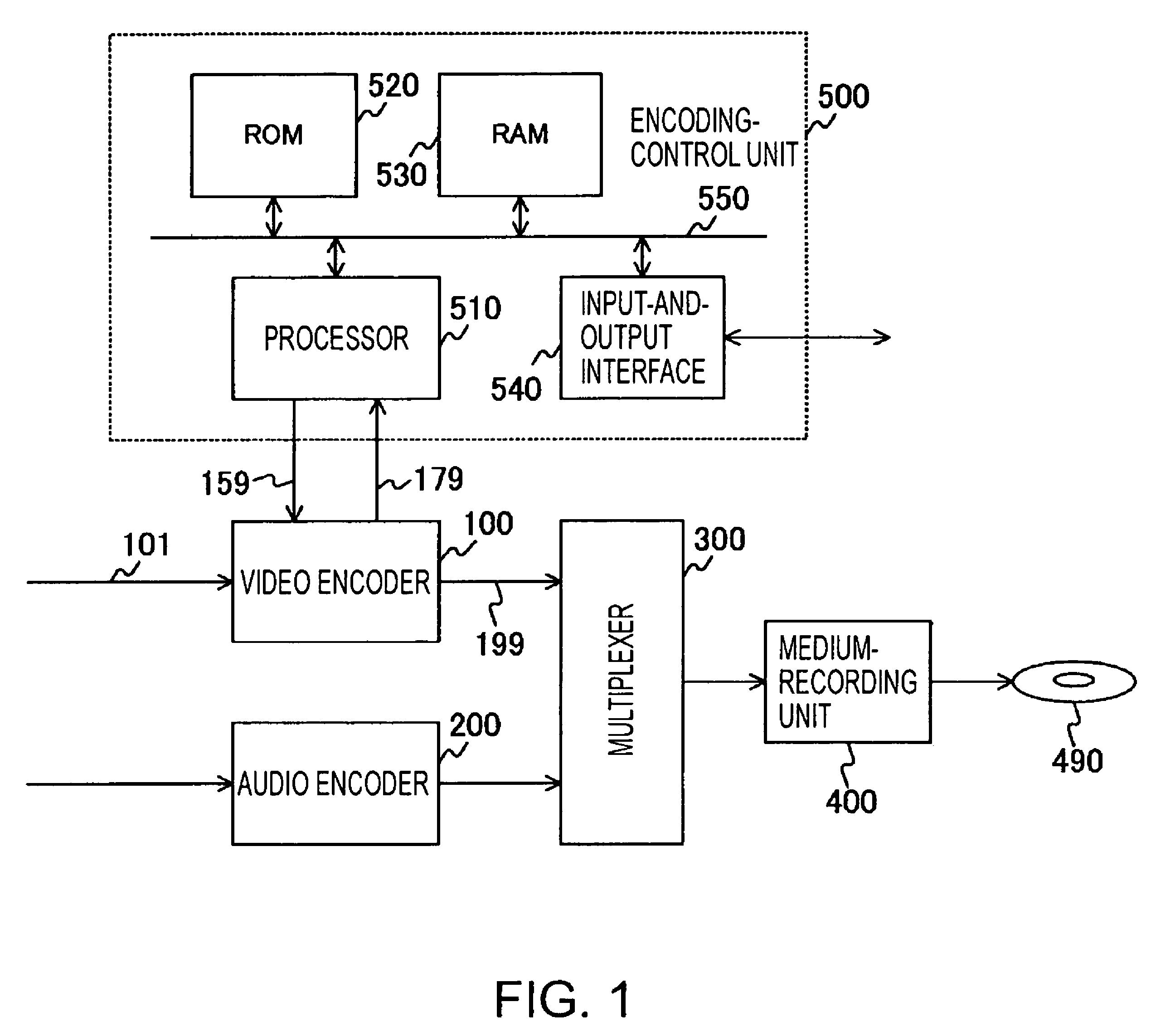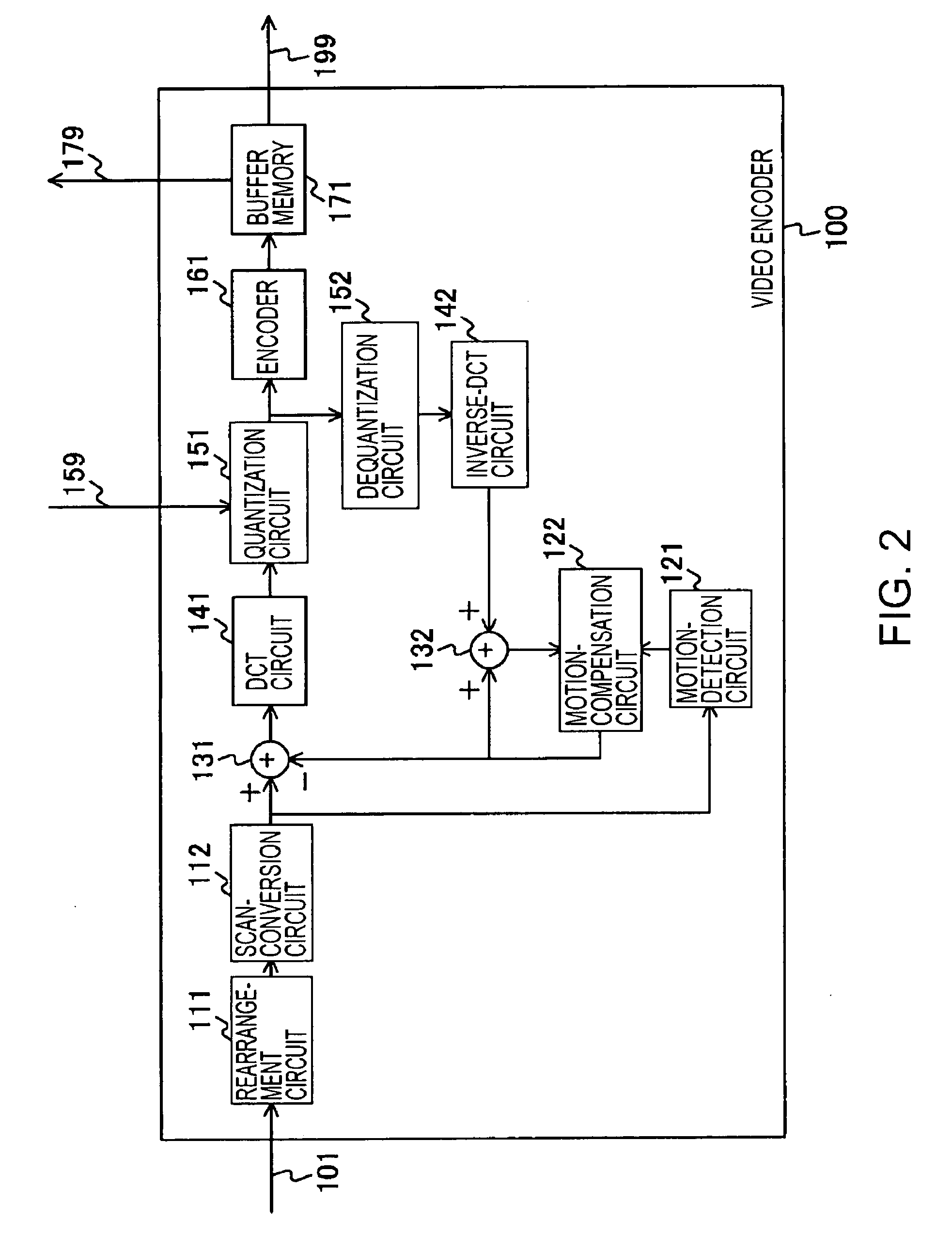Video-encoding device and video-encoding control method
a video signal and video encoding technology, applied in the field of video encoding devices for video signals, can solve problems such as errors in the vbv buffer, and achieve the effect of achieving seamless connection between chapters
- Summary
- Abstract
- Description
- Claims
- Application Information
AI Technical Summary
Benefits of technology
Problems solved by technology
Method used
Image
Examples
Embodiment Construction
[0030]Next, an embodiment of the present invention will be described in detail with reference to drawings.
[0031]FIG. 1 shows an example configuration of a video-encoding device according to an embodiment of the present invention. The video-encoding device includes a video encoder 100 for encoding a video signal, an audio encoder 200 for encoding an audio signal, a multiplexer 300 for multiplexing outputs of the video encoder 100 and the audio encoder 200, a medium-recording unit 400 for recording stream data multiplexed by the multiplexer 300 onto a recording medium 490, and an encoding-control unit 500 for controlling encoding performed by the video encoder 100.
[0032]The encoding-control unit 500 includes a processor 510, a ROM 520, a RAM 530, an input-and-output interface 540, and a bus 550 for connecting the above-described units to one another. The processor 510 receives a generated-code amount or the amount of data encoded by the video encoder 100 via a signal line 179, determi...
PUM
| Property | Measurement | Unit |
|---|---|---|
| time | aaaaa | aaaaa |
| time | aaaaa | aaaaa |
| Experts Group phase 2 | aaaaa | aaaaa |
Abstract
Description
Claims
Application Information
 Login to View More
Login to View More - R&D
- Intellectual Property
- Life Sciences
- Materials
- Tech Scout
- Unparalleled Data Quality
- Higher Quality Content
- 60% Fewer Hallucinations
Browse by: Latest US Patents, China's latest patents, Technical Efficacy Thesaurus, Application Domain, Technology Topic, Popular Technical Reports.
© 2025 PatSnap. All rights reserved.Legal|Privacy policy|Modern Slavery Act Transparency Statement|Sitemap|About US| Contact US: help@patsnap.com



